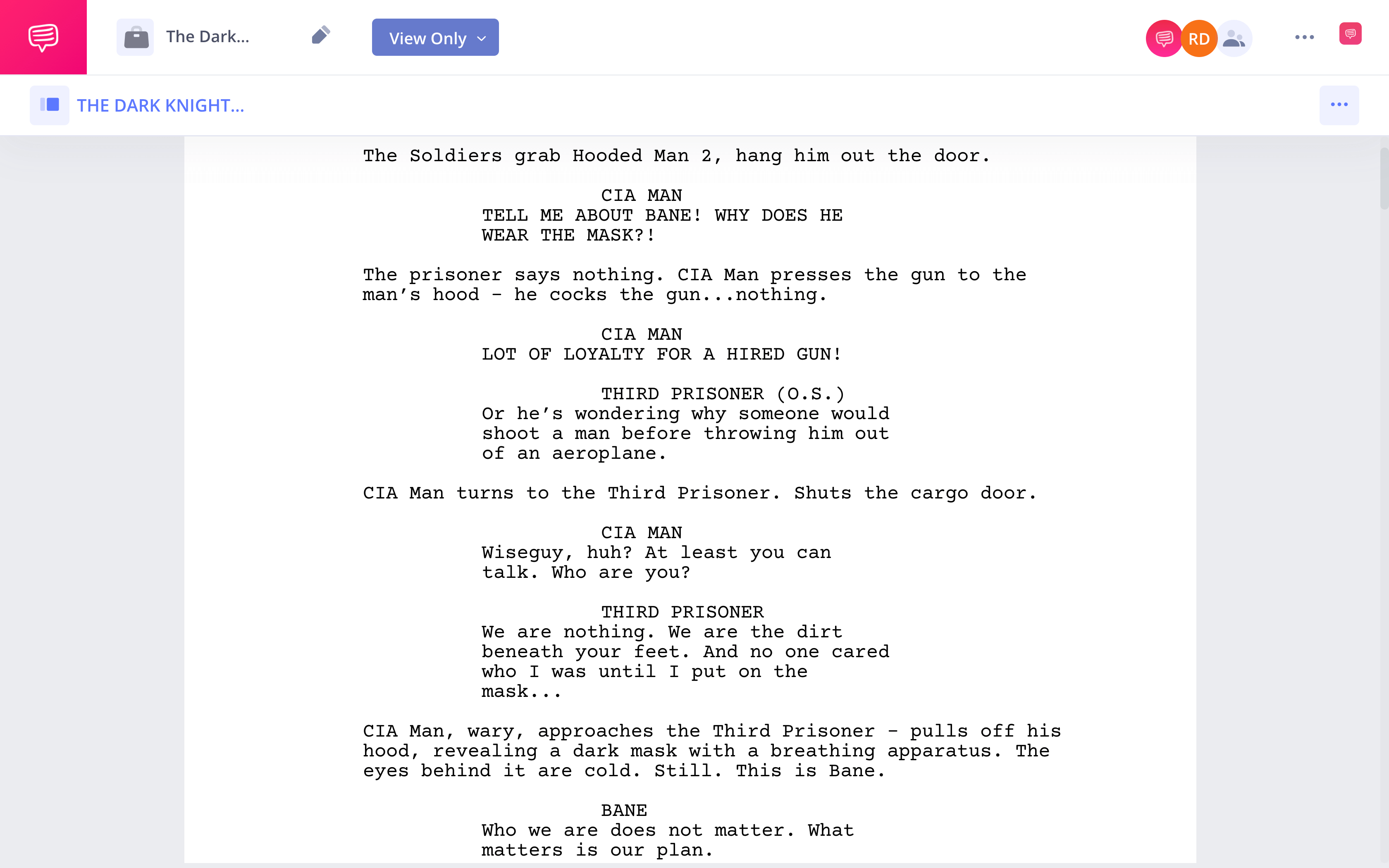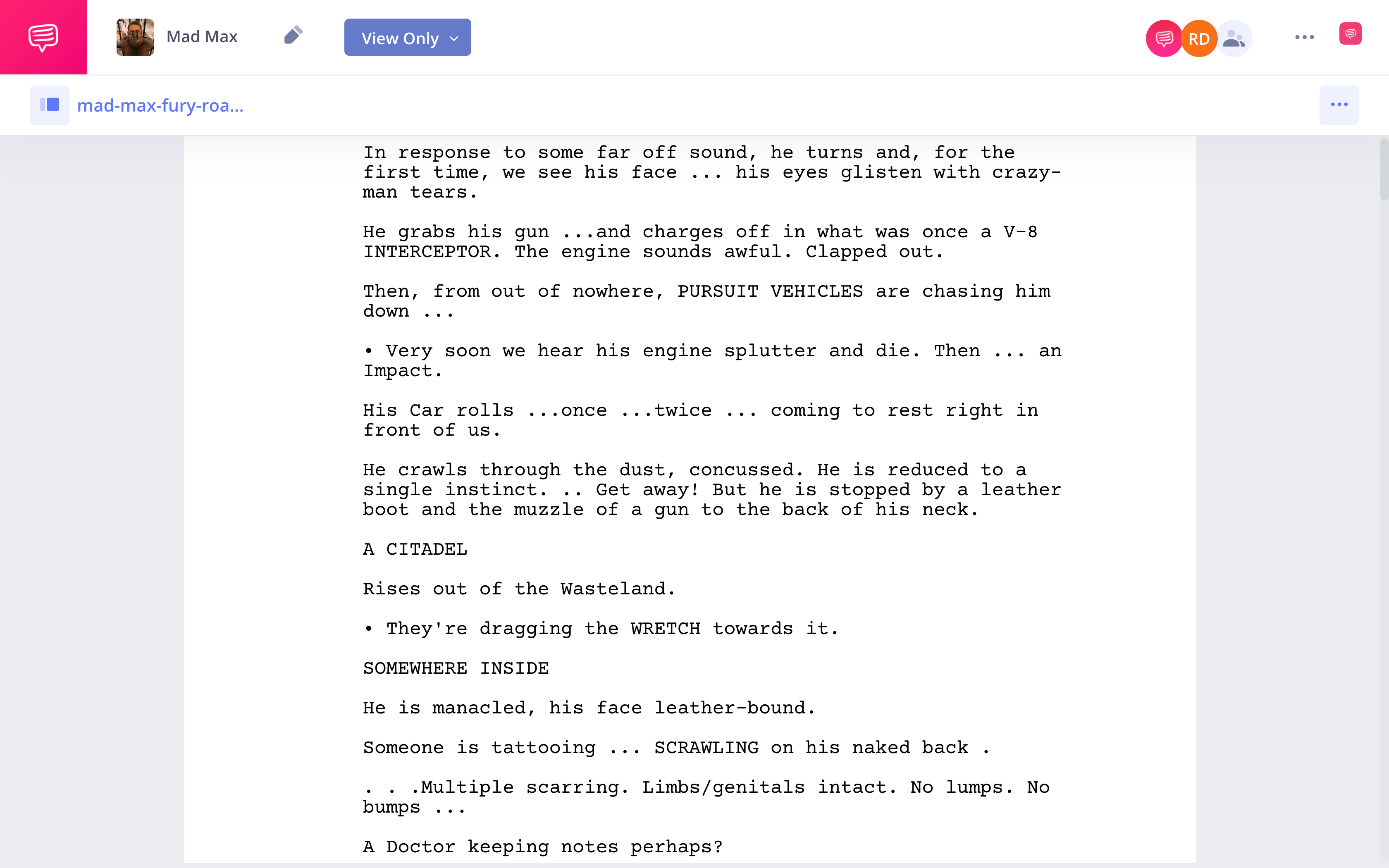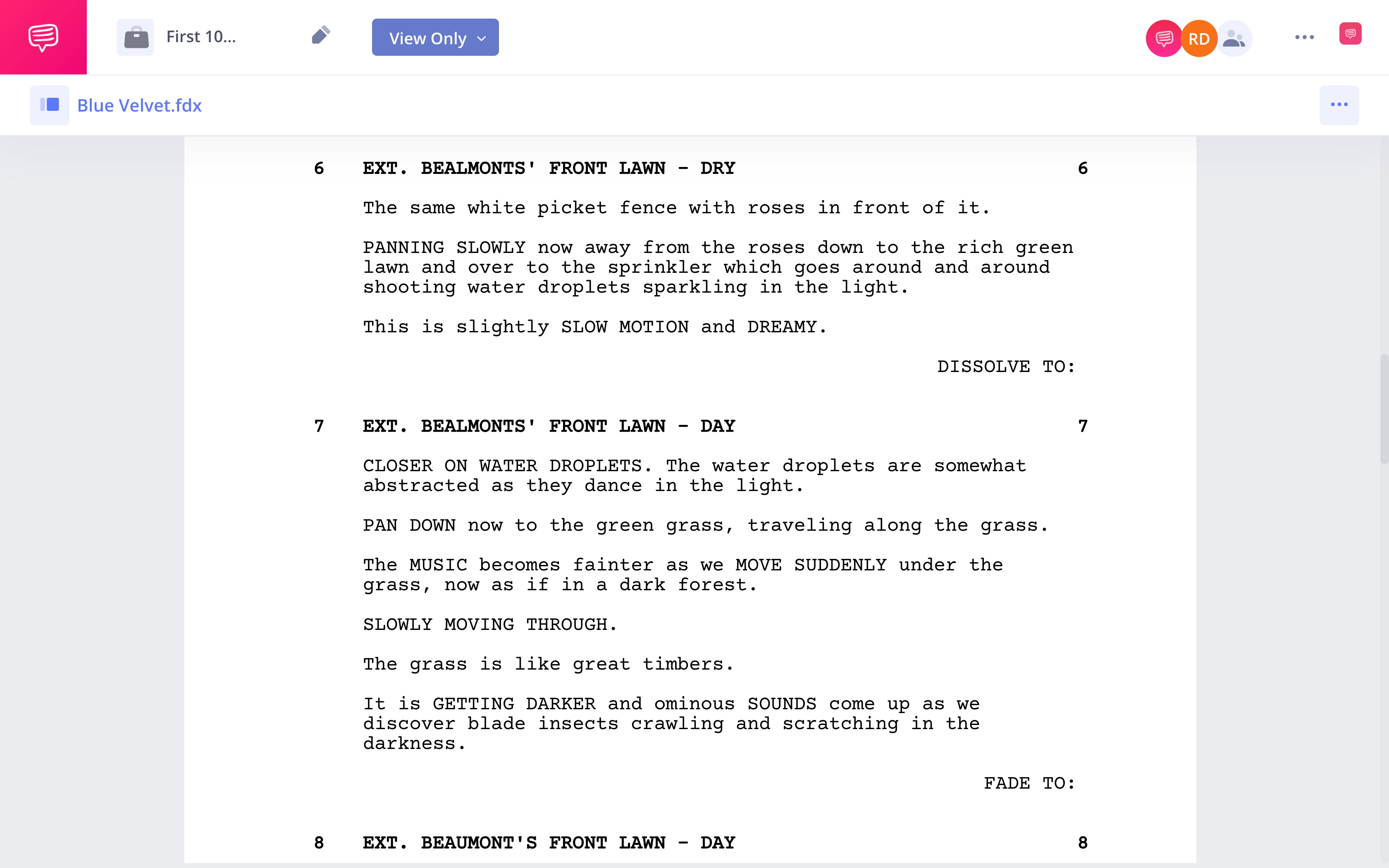This opening paragraph is a hook to get you to keep reading. And just as a blog post needs to quickly capture the interest of a reader, a screenplay needs to grab the attention of its audience. Scripts with great hooks are more likely to be read all the way through, and scripts that are read all the way through are more likely to turn into movies. In this post, we teach you how to write the first ten pages of a screenplay. Are you hooked?
Watch: How to Write the First Ten Pages of a Screenplay
How to write the first ten pages of a screenplay
Set the Tone
First and foremost, a screenplay’s opening ten pages must be intriguing. A reader may not yet know everything about what’s to come, but they should know enough that they want to know more.
As such, the first ten pages should establish a script’s tone. If your script is a comedy, the first ten pages should be funny. If your script is a horror, the first ten pages should have a scare (or at least be unnerving). Take a look at the opening pages of The Ring, which we imported into StudioBinder’s screenwriting software:
The Ring script PDF • How to write the first ten pages of a screenplay
By page 7, screenwriter Ehren Kruger has already thoroughly terrified the reader. The tone has been set: this is going to be a scary movie.
Nearly all scripts establish their tone off the bat. Other elements like plot can take a bit longer to fully develop, but tone typically needs to be evident immediately.
This is true even if a writer wants to create a tonal subversion later on. Parasite, for example, straddles multiple genres, from comedy to thriller to family drama.
Parasite is a masterclass in genre and tone • Subscribe on YouTube
Parasite's opening still effectively touches on most of these tones, infused with bits of comedy and nefarious mystery.
Related Posts
How to write the first ten pages of a screenplay
Establish Primary Characters
Typically, narrative films have main characters. And usually, the main characters are introduced early. This is especially true for character-driven stories, since the story can’t begin without the character’s presence.
But introducing your primary characters doesn’t mean simply throwing them in a scene. It means giving the reader a sense of who this character is. And as is the case in real life, first impressions are everything. Are they a reckless thrill-seeker? Show them jumping off a roof onto a trampoline. Are they shy and neurotic? Show them struggling in a public speaking class.
The Dark Knight Rises script boasts a particularly iconic character introduction for Bane. Take a look at the scene on the page:
Dark Knight Rises PDF • How to write the first ten pages of a screenplay
The scene perfectly encapsulates who Bane is. He is a self-appointed spokesman for the dispossessed (“We are the dirt beneath your feet”), all he cares about is achieving his goal (“What matters is our plan”), and he is exceedingly dangerous. He begins the scene as a prisoner in a seemingly impossible situation. And he ends it completely in control.
As The Dark Knight Rises illustrates, a script doesn’t have to open on the protagonist, but usually it will get to its primary characters quickly.
How to write the first ten pages of a screenplay
Show the World
Many scripts will establish the settings for their stories early. Setting, after all, plays an important role in film. Even if it doesn’t have a direct role in the narrative, it will significantly affect how the film will end up looking.
Screenwriting is all about economy. Usually, you don’t want to start a script with paragraphs and paragraphs of high-level descriptions of the world. Instead, a smart screenwriter will provide a reader with telling details from the world that gives them a hint of the larger picture.
In Mad Max: Fury Road, George Miller needs to introduce a reader to a foreign dystopia fiction. He does so with one simple line:
Mad Max Fury Road PDF • How to write the first ten pages of a screenplay
“The road warrior sits on a hill in the vast, pitiless wasteland.”
The phrasing is evocative and intimidating. This is a ruthless world inhospitable for human life. Of course, Miller also supplements this brief description with drawings he interspersed throughout the script.
But this isn’t really something most screenwriters can do — George Miller has earned a certain level of creative license.
Related Posts
How to write the first ten pages of a screenplay
Hint at Themes
Most great scripts are infused with larger ideas that comment on the world around us — in other words, themes. A writer might establish central themes in the first ten pages of their script.
How writer tackle theme • Subscribe on YouTube
The key here is subtlety. A theme should generally rise organically through the narrative. If it’s too overt too soon, it can feel didactic or moralistic.
Blue Velvet contains one of the most famous statements of themes ever, all within its first ten pages.
Blue Velvet script PDF • How to write the first ten pages of a screenplay
Blue Velvet is all about the horrors that lurk just under the idyllic veneer of the American Dream, and David Lynch captures this dichotomy in a few minutes. He juxtaposes domestic suburbia with brutal morbidity, literally showing the darkness underneath the surface of the town. But none of this is too on the nose — it’s all done without a word of dialogue.
As this opening scene does in Blue Velvet, establishing a theme can subliminally prepare a reader for the story to come.
How to write the first ten pages of a screenplay
Set the Stakes
We’ve said this once, but it bears repeating. The role of the first pages of your script, first and foremost, is to answer one question: Why should the reader keep reading?
Many times, the answer can lie in setting the stakes.
Story stakes refer to the implied consequences of what will happen if a protagonist doesn’t achieve their goal.

28 Days Later stakes: get bit, become a zombie
Say a character is trying to get a job. If the scene before is the character getting a massive check from their rich mother, then the stakes are pretty low. But if the stakes before is the character getting an eviction notice from their landlord, the stakes are much higher.
Take this opening scene from Jurassic Park script:
Jurassic Park script PDF • How to write the first ten pages of a screenplay
The reader now knows the stakes: if given the chance, some of the dinos will kill people. It is vital that these stakes are set. For nearly half of the film, the dinosaurs are in captivity. But the audience is on edge because of this first scene– we know what these animals are capable of.
Your opening ten pages don’t have to contain all of these elements. You can pick and choose what information you want to give out when. The key is to be deliberate–have a reason why you are omitting one or more of these elements. Just remember, when it comes to getting your script read, the first ten pages are everything.
Related Posts
Up Next
The Screenplay, Explained
Let’s zoom out a bit. We’ve looked at the first ten pages of a script, but what are the larger aims of a screenplay in general? Where does the modern screenplay format come from? And why do we still use it? We answer all these questions and more.





